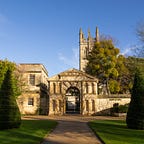Elm
Plant 331 in the 400 week countdown
Six decades ago, huge elm trees were common features of the British landscape, especially as isolated trees in hedgerows. Moreover, trees often had characteristic forms that were used as parish boundary markers. English elm (Ulmus procera), unparalleled as a rot-resistant timber, was highly valued for making water pipes until the advent of metal and plastic ones. Today, elm trees are rarely obvious landscape features. The trees succumbed to Britain’s best-known tree disease, Dutch elm disease.
Dutch elm disease is caused by two micro-fungi Ophiostoma ulmi and Ophiostoma novo-ulmi. First reported in Britain in the 1920s, the fungus remained quiescent until 1965, when over the next 15 years it killed the above ground parts of over 60% of all non-woodland elms (c. 11 million trees). British elms were not the only trees to suffer, elms across Europe and North America were similarly devastated. The pathogens’ rapid spread, and devastating impact, is regarded as an example of what happens when species lack genetic variation.
The fungus lives in the wood of young branches, blocking the movement of water from the roots as the tree grows. Moreover, it apparently interferes with growth hormones. The disease is spread by two Scolytus bark beetles that live in intricate galleries that they excavate between the wood and the bark of a tree. Beetles lay their eggs in the galleries. These are extended by the growing larvae as they feed, and are where the beetles pupate. The fungus also produces its spores in the galleries. Newly emerged, spore-covered beetles can infect healthy trees when they feed on new shoot growth.
Elms are easily distinguished from other trees in Britain by their unequal leaf bases and flattened, disc-like, wind-dispersed fruits. However, hybridisation and complex patterns of variation make accurate identification of elm species one of the most difficult tasks in the British flora; elm specialists are called pteleologists. In Britain there are broadly two groups of elms. Those such as wych elm (Ulmus glabra), reproduce mainly by seed, whilst the other group (e.g., Ulmus minor) rarely produces seed, reproducing clonally using suckers.
Plot’s elm (Ulmus plotii), a suckering tree endemic to the English midlands, was formally described by the Oxford-based botanist George Claridge Druce in 1911. The name commemorates Robert Plot, the first Keeper of the Ashmolean Museum. However, the tree was recognised as distinctive long before Druce — as early as the 1790s it was called Lock elm.
Professor Stephen Harris
Druce Curator of the University of Oxford Herbaria and Associate Professor in the Department of Plant Sciences
Oxford Plants 400
Twitter: Plants400
Further reading
Armstrong JV and Sell PS 2018. Ulmus L. In Sell P and Murrell G. Flora of Great Britain and Ireland. Volume 1. Lycopodiaceae-Salicaceae. Cambridge University Press, pp. 264–305.
Brasier CM and Buck KW 2001. Rapid evolutionary changes in a globally invading fungal pathogen (Dutch elm disease). Biological Invasions 3: 223–233.
Richens EM 1983. Elm. Cambridge University Press.
